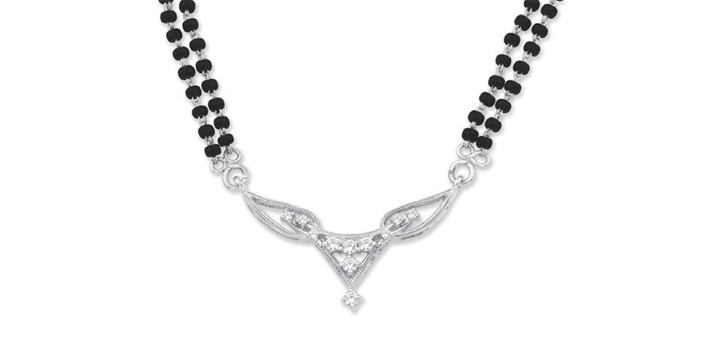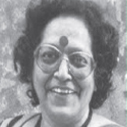IN India, when Hindu women get married, they must wear an identity ‘mark’ to indicate that they are married, that their husbands are alive and that they are under the safe supervision and control of their husbands and their extended families. Christians across the world also wear the wedding ring, but both husbands and wives wear rings to show that they are married. In Hinduism however, only wives must wear proof of the fact that they are married because in earlier times, a married woman supposedly was considered more respectable than an unmarried young girl, and of course better off than a widow who was considered unlucky, useless and expendable.
Married women are given special adjectives to describe them, such as sumangali – one who brings good fortune to the family she steps into, suhagan – she is blessed because her husband is alive, or saubhagyawati, which means she is lucky in every respect. By the same logic therefore, the minute a woman lost her husband, she was considered a ‘curse’ in human form, shorn off not only the marriage signs she wore on her skin and her body, but also her hair, her coloured clothes and confined to an extremely austere way of life whether she liked to or not. She was considered unlucky for all festive occasions such as weddings and annaprasana ceremonies. What are these marriage symbols that are ritually placed in a particular order on the bride at the time of marriage and why are women alone subject to this custom till this day? Some signs are worn on the body – the bindi on the forehead, tattoos on the chin and cheeks depending on the caste the bride belongs to, sindoor in the hair parting subject to the region she came from and so on. Kaajal or kohl – charcoal black used to make up the eyes was not necessarily exclusive to married women alone because unmarried girls are also known to have sported it. On the neck, a married woman is expected to wear a blackbeaded mangalsutra if she belongs to the western states like Maharashtra and Goa, the thali if she is from the southern states and different forms of mangalsutras if they belonged to a given Malabari Muslim tribe, and so on. Bangles of different makes, toe rings for the toes, bicchuas as anklets are other adornments that were once mandatory wear for the married woman.
Strangely, grooms/husbands were free of these customs. As the marriage rituals progressed, the groom would adorn his bride one by one, with these symbols ending in the saptapadi around the sacred fire, but he himself did not have to wear any sign to show whether he was married, a bachelor or a widower. Why? Because we lived and still live in a patriarchal society where men dominate, control, rule society and even frame rules to be followed by children, girls and women.
Though today’s urban, modernised and educated bride does not believe in wearing these symbols as signs of marriage, they enjoy the privilege of being so adorned during the marriage ceremony.
While things may be changing today, traditionally in patriarchy, a woman’s position is largely a position derived from the men in their lives – the father when small, the husband or the brother when young and the son when old. A woman has no position of her own and the position she occupies is determined mainly by the adornments she wears on her person. Even the jewellery she wears is derived property – acquired from her parents, husband, his family, relatives and friends.
Her jewellery is not her own though legally, if she is a married woman, it forms part of her streedhan and she is the sole owner. But there is a great gap between precept and practice, between legal rules and their application in real life. So in most societies, the jewellery a woman wears is not necessarily her own. In this sense, how much jewellery a woman wears or owns, or the wedding symbols she adorns herself with do not empower her in any way. She can only wear jewels but does not have the freedom to give them away without the consent of older women relatives or the men in the family. For example, a married daughter can never inherit her mother’s mangalsutra because she cannot wear it even if she is married.
Tejaswini Baluni has a different explanation for marriage symbols being the exclusive domain of women ordained by the society dominated by men. She says, “In ancient times, during the reign of kings, when empires were invaded in the war for power, the kingdom that lost the war lost its right over everything within the kingdom including the rights over the subjects – specially the women. The winning party took with them the women of the empire that lost the war. The winning ruler’s soldiers and men chained the women by their wrists and ankles now known as bangles and anklets. Since they were practically dragged from the battlefield, trails of blood trickled down their foreheads and this red colour later became the sindoor or vermillion. Just as the chains on the hands and legs became symbols of the captive woman and the blood signified that they were prisoners forever, today, the same marriage symbols the groom adorns his bride with signifies the transfer of property (the bride) from one owner (the father) to another owner (the husband). The ceremonial transfer then signifies that the bride is the property of the husband.”
In the dharmashastras, the classical legal texts, we get to learn about a ‘normative and idealised pattern of the life cycle.’ The phrase ‘normative and idealised’ is in keeping with patriarchal dictates where women are secondary to action, decision and dictation. Harlan and Courtright suggest that items of jewellery and other ornamentation practices with the Hindu ritual customs are diabolic ways of binding the lives of married women, to confine and restrict them within limits of mobility and social behaviour. A proper wife wears a chignon or a braid because loose hair implies lack of sexual restraint. She also wears jewellery that symbolises her married status, including bangles. Often her jewellery includes precious metal ankle bracelets; metal or cotton necklaces on which are strung embossed representations of deities or a picture of the husband. In some Indian pockets, nose rings and forehead ornaments tied back into chignoned hair also symbolise a woman’s attachment to a husband and his family.
But if one looks closely, over time, some signs have become very confusing. For example, the nose ring is worn also by prostitutes and courtesans. Many of them also sport the vermillion in their hair parting and wear bindis of different shapes and sizes on their foreheads. So, in the following series of stories, it would be interesting to discover the history, practice and ideology that lie behind marriage symbols such as the bindi, the vermillion, the kaajal, the mangalsutra, the nose ring, the ring, and so on for Indian women yesterday, today and tomorrow. The knowledge is imperative to familiarise ourselves with a part of our cultural history.


